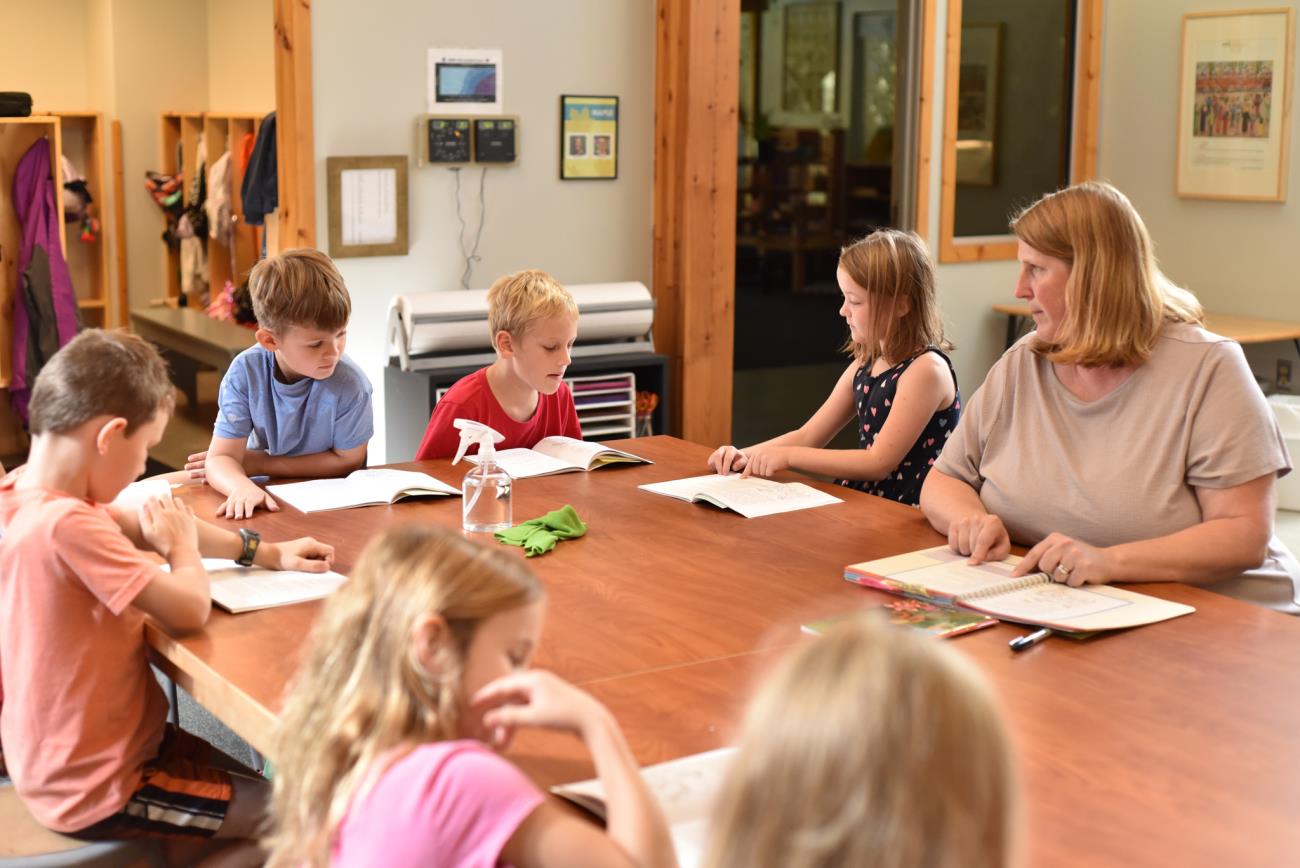How does the process of learning to read look in a Montessori classroom? Montessori has what can be called a balanced literacy approach to language. This means that there are both spoken and written components that come together in a variety of ways, over time, and in all areas of our school.
Montessori classrooms are language-rich environments. At every level, children hear a wide variety of words spoken and repeated. It can be the names of clothing needed to go outside or the animals that live in the grasslands of Africa. Songs are sung to help with remembering the names of the continents or learning about being a good friend. Children freely move and interact with one another which gives ample opportunity to listen to what others are saying, practice new words with one another, and share new information. Conversations between child and adult and between child and child are constantly happening in every classroom. Concrete experiences like finding a fossil, baking, slicing bananas, and going down the slide, reinforce the vocabulary taught in Montessori classrooms.
Writing usually begins in the Primary classrooms. There is a very recognizable material called sandpaper letters, which is where the connection between a written letter and a sound is introduced. Another Montessori material, the movable alphabet, is used to teach children about reading and writing. There is not enough room in this blog post to share all the ways that the child’s hand is prepared for writing in Montessori classrooms. Briefly, all of the sensorial and practical life work that the children do is helping to prepare them to write.
In the Elementary environment, lessons continue from prefixes and suffixes to nouns and verbs to support the growing reader and writer. A notable shift begins to happen in older elementary students from learning to read to reading to learn. Yet, learning to read is a process. Many of these steps happen at the same time, or readers move through the steps again and again as they grow their reading skills.
The steps to reading include:
Phonemic awareness: understanding that words are made of sounds. This may look like rhyming, clapping syllables, or thinking of a word that begins with a specific sound.
Phonics and Word Recognition: the connection between the symbol (letter) and sound. This is where spelling lessons, decoding skills like syllable types, and practicing steps to figure out a word are taught.
Fluency: the ability to read words and sentences at a rate similar to speaking. Fluency is an important step to practice because it creates the opportunity to understand what is being read.
Experiencing Rich Text: carefully curated classroom and wing libraries with diverse books to cater to various interests and reading levels. This exposure to different types of literature nurtures a love for reading.
Comprehension: The ability to read a word or sentence and then be able to talk or write about it is the goal of the reading process.
My Montessori training, in addition to training in an Orton-Gillingham approach to systematic reading, allows me to come alongside the teachers and the students to provide support through these different reading steps. Sometimes that looks like materials or lessons coming into the classroom and other times it looks like the student coming for direct lessons with me.
Learning to read is a profound and ongoing process, filled with wonder and discovery. Even as children master the fundamentals, the world of language and literature continues to offer new horizons to explore. Montessori education embraces this journey, nurturing a lifelong love for reading and language.
